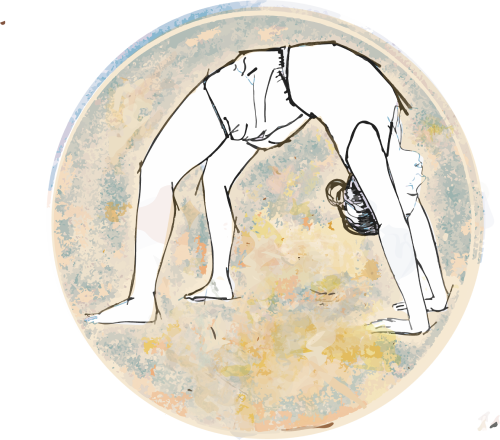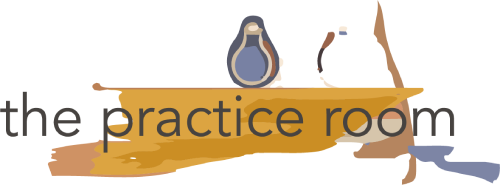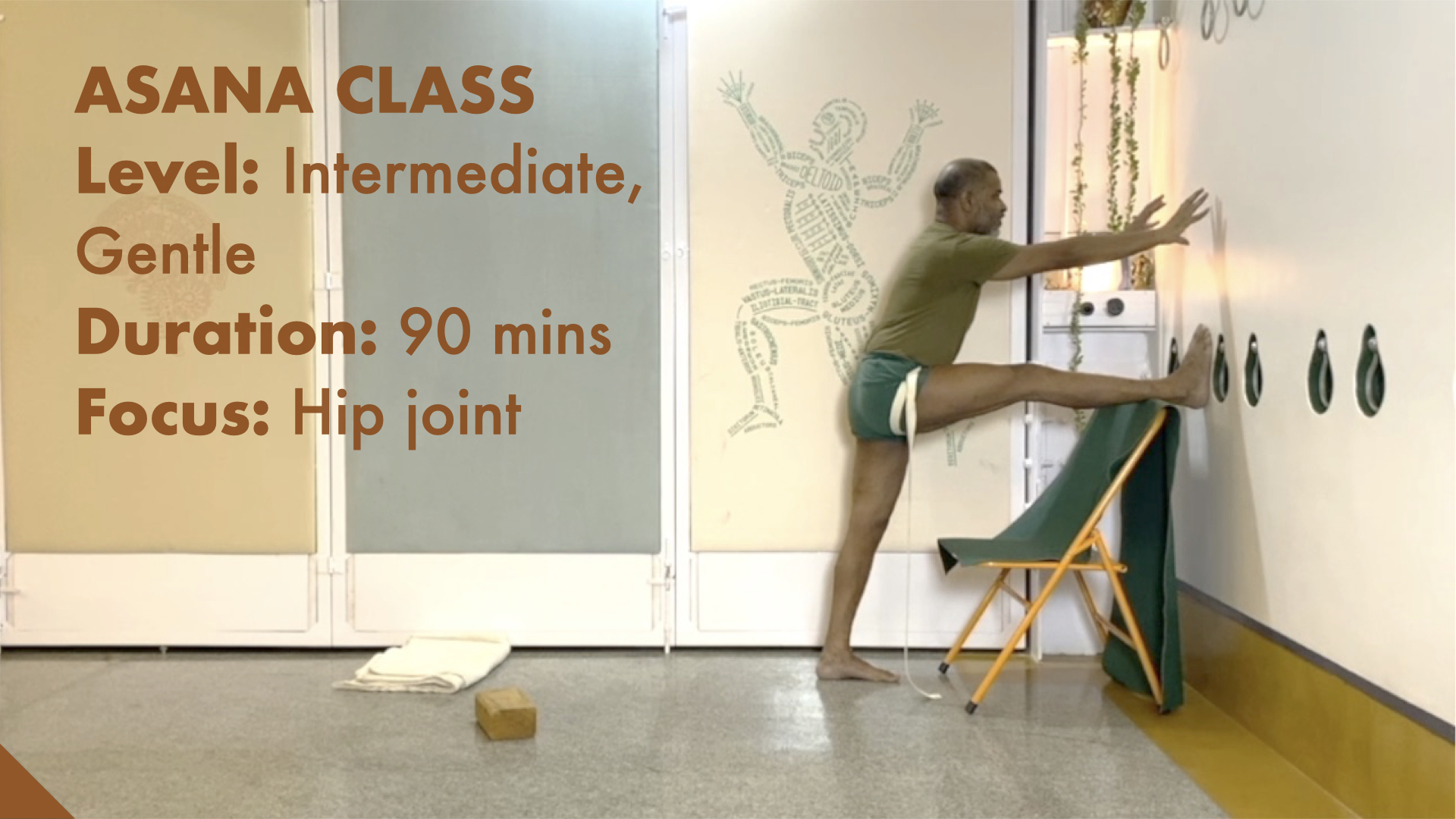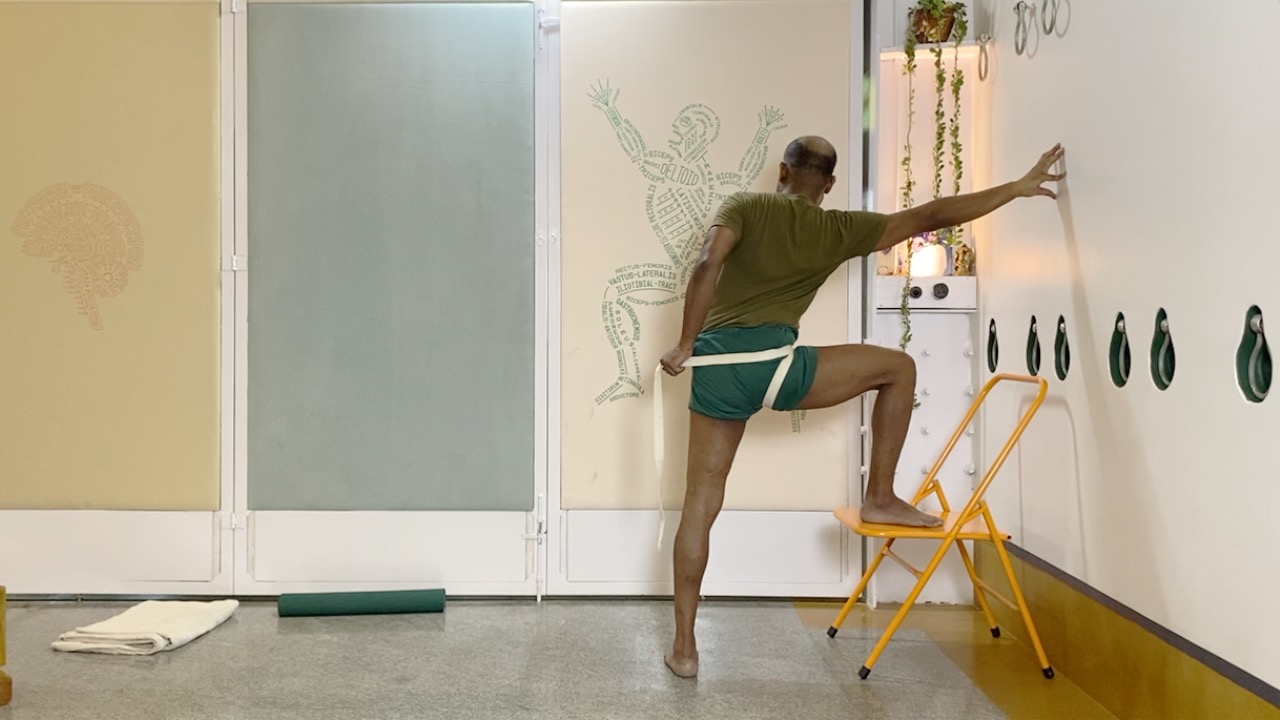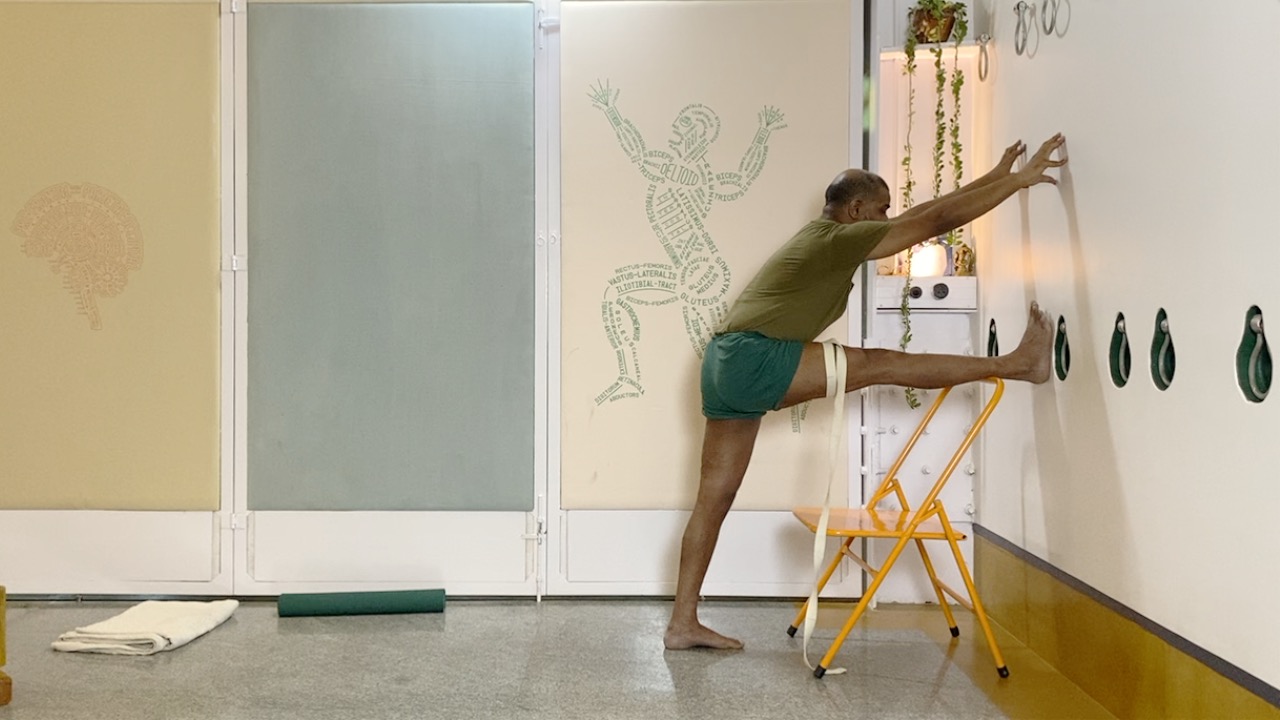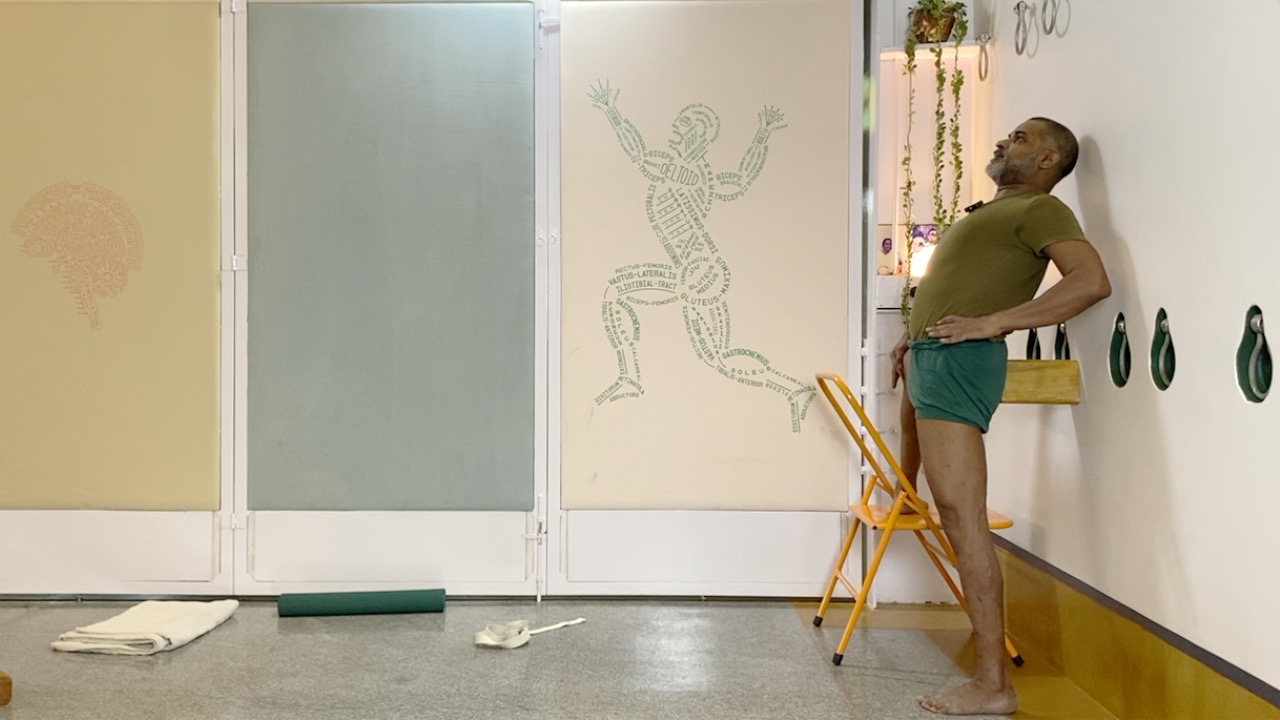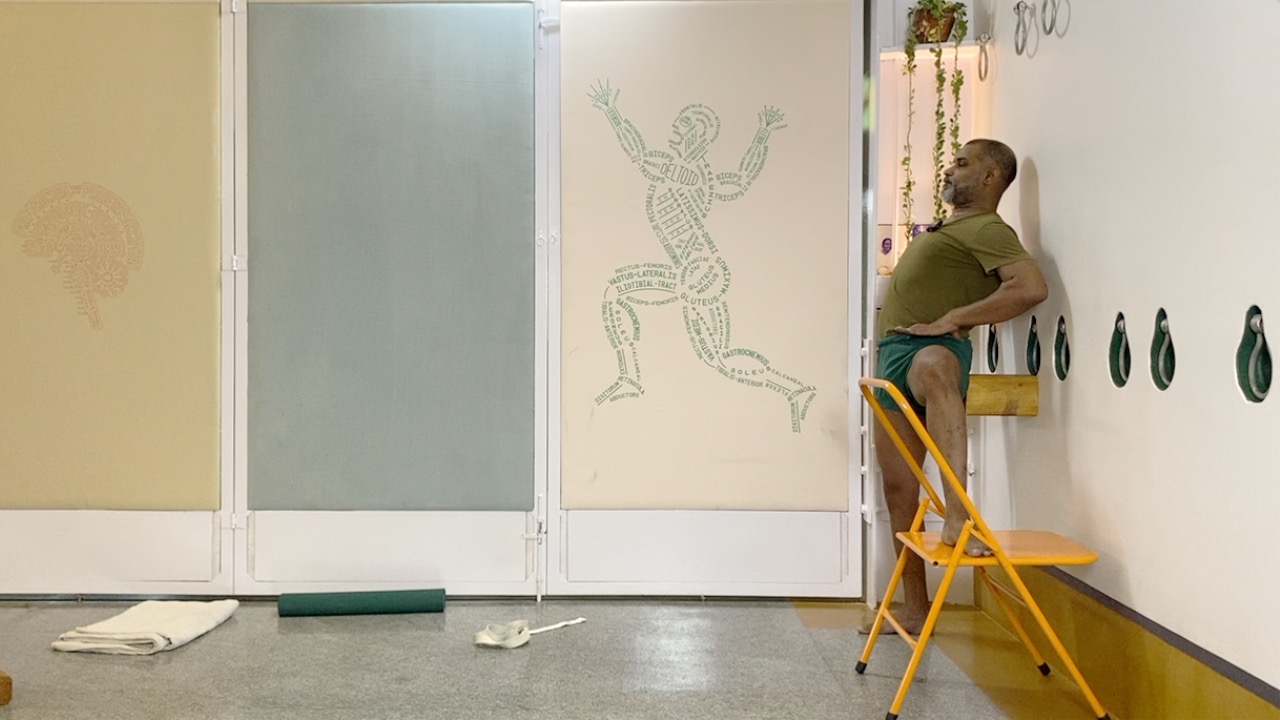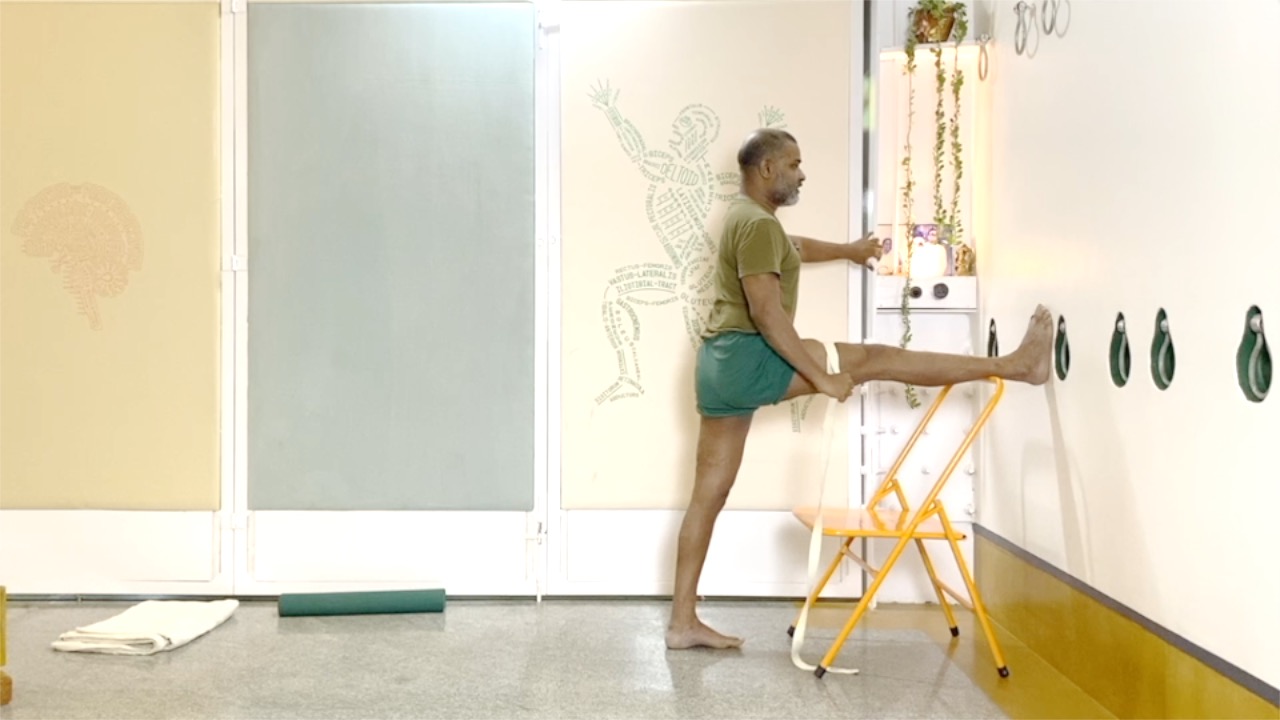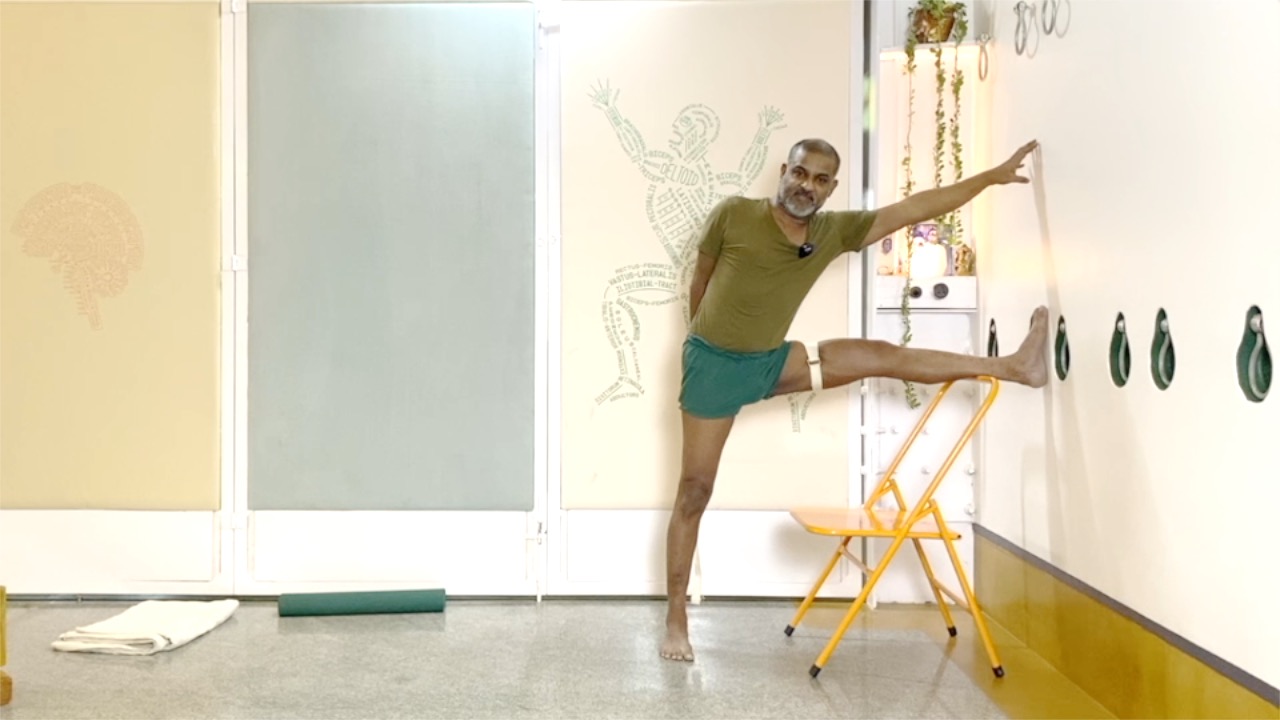Hip bones are connected to femur bones (thigh bone) forming the primary connection between the bones of the lower limb and the axial skeleton. This connection is through the large ball and socket joint of the hip. The thigh bone is called a femur bone and not only is it the strongest bone in the body, it is also the longest. Femur bone is the strongest bone in the human body.
The hip area is kept in place when these two thigh bones on either side are fixed strongly fixed in the hip joint, and when the muscles of the lower back (para spinal muscles) are extended upwards.
This session is a continuation of the previous session. It continues exploration of external rotional movement, using a belt to coax the hips to the end range of its rotational movement. We often dont touch these ‘outer corners’ in our regular activities. in fact physical pursuits such as bicycling and various athletic activities might diminish them further. This not only makes the hips stiff, setting them up for later injuries and imbalances, it also makes the groin area stiff, uncomfortable and prone to injuries.
Some of the other actions from the previous session to connect the thighs and the lower back simultaneously to effect the hip in a healthy manner are repeated and reinforced.r)

